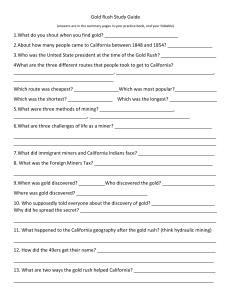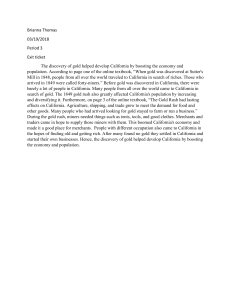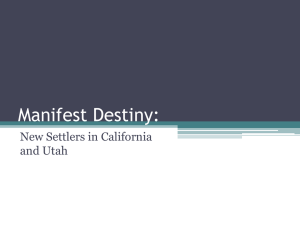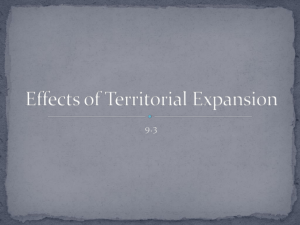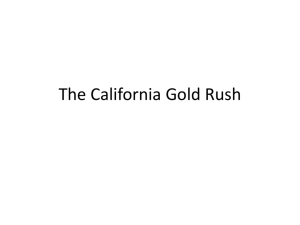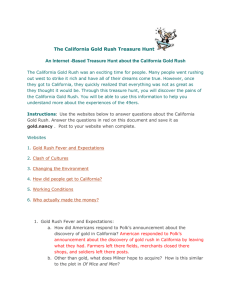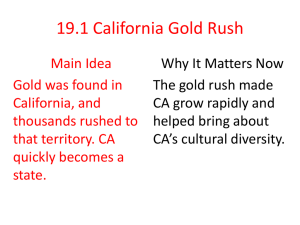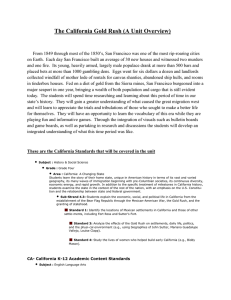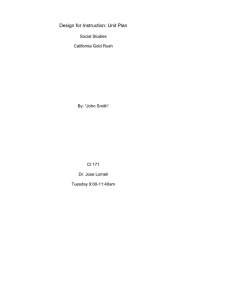The California Gold Rush
advertisement
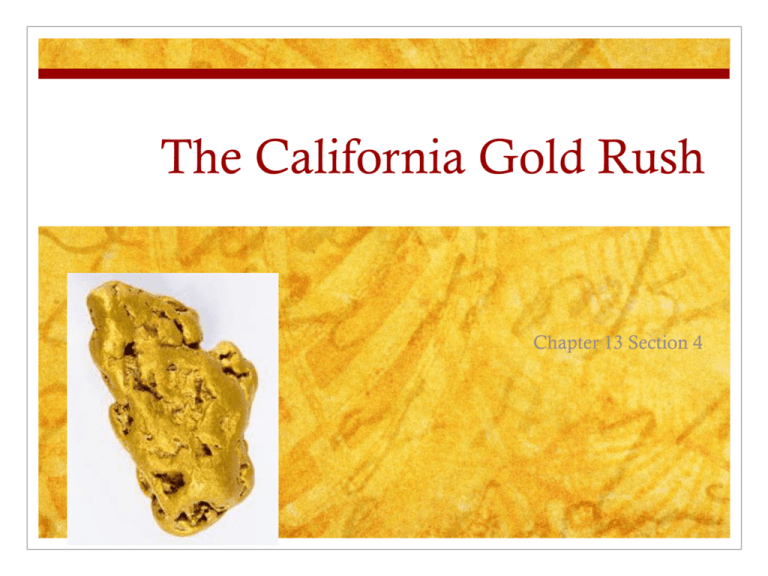
The California Gold Rush Chapter 13 Section 4 California Before the Rush Populated by Native Americans and Californios Settlers of Spanish or Mexican descent Lived on huge cattle ranches acquired from California missions. John Sutter Persuaded Mexican governor to give him land in 1839 Built a fort on 50,000 acres, dreamed of agricultural empire Sutter’s Mill In 1848, Sutter sent James Marshall to build a sawmill on the American River “My eye was caught by a glimpse of something shining…I reached my hand down and picked it up; it made my heart thump for I felt certain it was gold” Rush for Gold News of the discovery spread rapidly Miners soon found gold in other streams 1849 thousands of gold seekers headed to CA: called “49er’s” Reaching California Fortune seekers had three ways to get to California: Sail around South America Sail to Isthmus of Panama, cross overland, then sail to CA 18,000 miles, storms, sickness, spoiled food Risk of deadly tropical disease Travel trails across North America Who Went to California? Young men “A gray beard is almost as rare as a petticoat” Luzena Wilson In 6 months she only saw 2 other women in Sacramento 2/3rds were white Americans Others were Native Americans, free blacks, slaves Mexico, Europe, South American, Australia, China Conflicts Began to force Native Americans, Mexicans and Chinese out of gold fields Discrimination increased after CA became a state in 1850 Foreign Miners Tax: imposed a tax of $20 a month on miners from other countries Most left or opened other businesses Life in the Mining Camps Mad Mule Gulch, Hangtown, Coyote Diggings Began as rows of tents, then rough wooden buildings of stores and saloons Mining towns were dangerous A long way away from Mom and Wife: a “No” culture Mining Life Pickings were rare Days spent in knee-deep icy streams Sifted through sand and mud Exhaustion, poor food, and disease Outrageous high prices for basic supplies Gamblers and con artists Who became Rich? Merchants: Restaurants Hotels Boarding Houses General Stores Laundries Wells, Fargo, and Co. Impacts of Gold Rush 1852 Gold Rush over 250,000 now in CA Caused economic growth Port city of San Francisco became center of banking, manufacturing, shipping and trade. Sacramento became center of a productive farming region Impacts of Gold Rush Californios had property seized by Americans Spanish Heritage still lives in CA and Southwest Native Americans suffered disease, loss of hunting grounds, murdered By 1870 their population went from 150,000 to 58,000 California became a free state, causing an unbalance in the Senate Impacts of Gold Rush Transcontinental Railroad Connected both coasts Built up towns along the rails Moved goods across the continent Environmental Used hydro mining, tore away hillsides and bluffs Streambeds redirected due to digging Fish were killed
